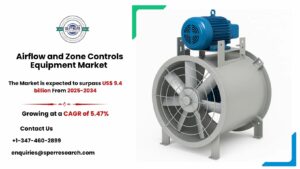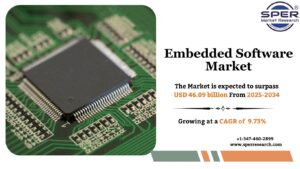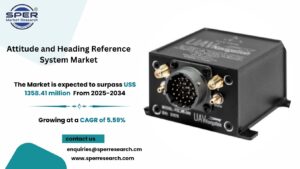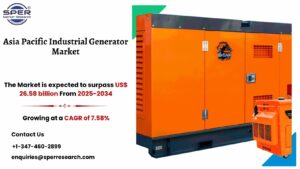Indonesia Electrical Materials Market Growth and Share, Emerging Trends, Revenue, Key Manufacturers Challenges, Future Forecast 2033: SPER Market Research

Electrical materials are vital components utilized in electrical systems and applications to facilitate safe and efficient electrical functionality. They encompass a diverse array of products exclusively designed for electrical purposes. Typical examples of electrical materials include cables and wires for transmitting power, switches and outlets for regulating electrical current, circuit breakers and fuses for safeguarding circuits, transformers for voltage control, electrical panels and distribution boards for power allocation, connectors and terminals for secure connections, conduits and conduit fittings for cable protection, lighting fixtures for illumination, insulation materials for conductor safeguarding, and grounding materials for electrical safety.
According to SPER market research, ‘Indonesia Electrical Materials Market Size- By Product Type, By Application, By Mechanism, By Type, By End-User – Regional Outlook, Competitive Strategies and Segment Forecast to 2033’ state that the Indonesia Electrical Materials Market is predicted to reach USD 7.18 billion by 2033 with a CAGR of 13.22%.
The Indonesia electrical materials market is driven by factors such as increasing demand for consumer electronics, spurred by a growing middle-class population and rising incomes. Additionally, the industrialization of sectors like automotive, electronics, and textiles fuels the demand for electrical materials in machinery, automation systems, and infrastructure. Technological advancements, including smart grids and energy-efficient solutions, further contribute to market growth. Overall, urbanization, infrastructure development, rising energy consumption, renewable energy initiatives, government support, expanding consumer electronics market, industrialization, and technological advancements are key factors propelling the growth of the Indonesia electrical materials market.
Despite the many drivers and opportunities for growth in the electrical materials market in Indonesia, there are also several challenges that must be addressed. Competition from imported products, which often have lower prices, challenges domestic manufacturers. Maintaining competitiveness and ensuring product quality becomes crucial in this context. Additionally, there is a shortage of skilled labour, particularly in design, manufacturing, and installation of electrical materials, necessitating training programs to address this gap. Sustainability and environmental concerns also pose challenges, as the market faces increasing demand for eco-friendly and energy-efficient products. Compliance with regulations and adopting sustainable practices are necessary. To overcome these obstacles, proactive measures such as regulatory reforms, infrastructure investment, quality control, innovation, and skills development initiatives are vital for the growth and competitiveness of the Indonesia electrical materials market.
Request For Free Sample Report @ https://www.sperresearch.com/report-store/indonesia-electrical-materials-market.aspx?sample=1
In addition, The COVID-19 pandemic significantly affected the Indonesia electrical materials market, causing supply chain disruptions, a decline in construction projects, reduced investments, delayed electrification programs, shifts in consumer preferences, financial constraints, and increased emphasis on health and safety. However, as economic activities resume and infrastructure projects regain momentum, the market is expected to recover. The focus on renewable energy and sustainability may also present new opportunities in the post-pandemic era.
Geographically, the region of Java in Indonesia serves as the primary market for electrical materials. With its high population and prominent cities like Jakarta, Surabaya, and Bandung, Java is a hub for economic activities and infrastructure growth. The concentration of industries, commercial establishments, and urban areas in Java drives a greater demand for electrical materials in this region compared to other parts of Indonesia. Additionally, some of the market key players are P.T. Siemens Indonesia, Jeko Elektrik Indonesia, Hubbell Indonesia, PT Schneider Electric Indonesia, PT Mitsubishi Electric Indonesia including others.
Indonesia Electrical Materials Market Key Segments Covered
The SPER Market Research report seeks to give market dynamics, demand, and supply forecasts for the years up to 2033. This report contains statistics on product type segment growth estimates and forecasts.
By Type: Based on the Type, Indonesia Electrical Materials is segmented as; Cable Management, Circuit Breakers, Plugs & Sockets, Cable Duct, Voltage Switcher, Electrical Conduit, Light Switches, Others.
By End-User: Based on the End-User, Indonesia Electrical Materials is segmented as; Domestic, Industrial, Commercial.
By Region: This report also provides the data for key regional segments of Bali, Java, Kalimantan, Riau, Sumatra, Rest of Indonesia.
For More Information, refer to below link:-
Indonesia Electrical Equipment Market Outlook
Related Reports:
Follow Us –
LinkedIn | Instagram | Facebook | Twitter
Contact Us:
Sara Lopes, Business Consultant – USA
SPER Market Research
+1-347-460-2899








